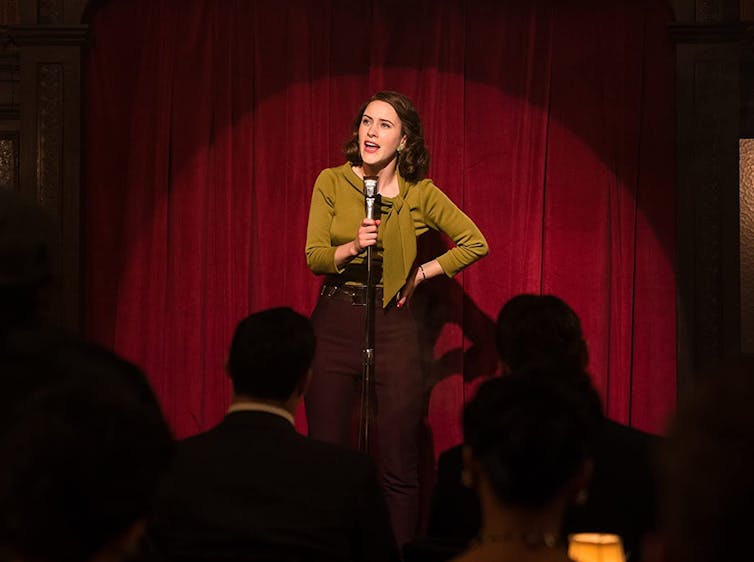But is it art? Standup comedy and the quest for cultural credibility

Arts Council England (ACE) has recently taken the unprecedented step of including comedy as a form of theatre under the terms of the Culture Recovery Fund, part of the emergency response package to help cultural institutions recover from the blow they have taken during the pandemic. But the council has expressly stated on its website that this was mandated by the Department for Culture, Media and Sport and does not mean comedy clubs will be eligible for future ACE funding.
This singling out of comedy clubs once again brings into focus the disdain that the ACE has displayed for standup in the past and means now is the perfect time to reassess standup comedy as art.
Standup comedy is not created purely by the performer, but as a collaborative production between the performer, the audience, the venue and the promoter. In the same way a theatre is arranged to support dramatic performance or a gallery is lit to display paintings, so too must a standup comedy gig be presented in such a way that it contextualises the performance to come – the iconic image of the single microphone on a stand in a spotlight is evocative of standup comedy without anything needing to be said.
Unlike many other art forms, standup performance is more akin to a reactive conversation, albeit with laughter and other reactions forming the bulk of the audience response. And, in turn, this instant audience critique often shapes the unfolding production as the performer reacts. Finally, it is the job of the promoter and compère, through advertising the gig to designing the line-up of the show and the introducing of the artists, to create an atmosphere that the standup comedy can flourish in.
At first glance a performance may seem fleeting and inconsequential, something that will only be remembered by the audience that witnessed it. But, for the comedian, each performance shapes and recontextualises their set ready for the next gig. A standup comedian may work on a routine for years, honing and shaping each line, each joke and each pause with every performance. So each gig creates something unique that is tied inexorably to the people and place who witnessed it.
A gig is not just a venue, but all the contextual understanding that goes into making it a space to present comedy and support critique. An audience is not just a collection of strangers, but a collective who are guided through previous experience or through a skilled compère what to expect from a standup comedy gig and how to constructively critique the performers.
No laughing matter
When viewed as a collection of creative spaces for the production and critique of comedy, the vitality and energy of the circuit becomes visible – not just as a way for comedians to make a living but as part of the very fabric of standup comedy itself. The lifeline provided by the Culture Renewal Fund means that more clubs will survive, that less collective experience will be lost from the circuit as a whole.
But a lot will depend on what happens in the next few months. An emergency survey by the recently founded Live Comedy Association found that 58% of the industry rely on live comedy for more than 50% of their annual income and that 57% have already lost 50% of their personal income. Further, 59% of comedians said they would need to leave the industry in the next six months if live events continue to be unfeasible.
This loss would be massive for the circuit, not just on a personal level but in terms of lost experience. Learning standup comedy relies on mentoring – when you are starting out there is very little external to the comedy circuit to guide you, no equivalent of a drama school and only two universities offering undergraduate degrees in comedy writing and performance. The only people who can tell you why comedy is done the way it is are the people who do it, day in and day out.
Grand tradition
Standup comedy in its present incarnation has been part of the British cultural zeitgeist for more than 50 years. It has evolved from music-hall singers, front-cloth comics and variety acts of the early 20th century to the performers who travelled the often politically divergent circuits of working men’s clubs, folk clubs and London standup comedy clubs of the seventies.
This was then transformed with the alternative comedy boom of the 80s, the lad-culture drenched 90s and was colonised through panel shows which became the mainstay of TV schedules of the noughties, most recently spawning the sprawling DIY scene of the last decade. Here we’ve seen amateur, professional and experimental acts alike welcomed and encouraged by gigs created by fellow comedians not for profit, but to provide the most important resource of all – stage time, the five to ten minutes where the standup comedian creates and hones their art.
Standup comedy will survive. The current restrictions brought by the pandemic are breeding technical innovation through virtual performances that are accessible to anyone with internet access. Now is the ideal time to invest artistic credibility in something that is a fundamental fixture of British life and a very broad church. Invest now in “art for arts sake” to ensure the future of standup comedy, for all our sakes.![]()
Sebastian Bloomfield, PhD Candidate, York St John University
This article is republished from The Conversation under a Creative Commons license. Read the original article.
Comments